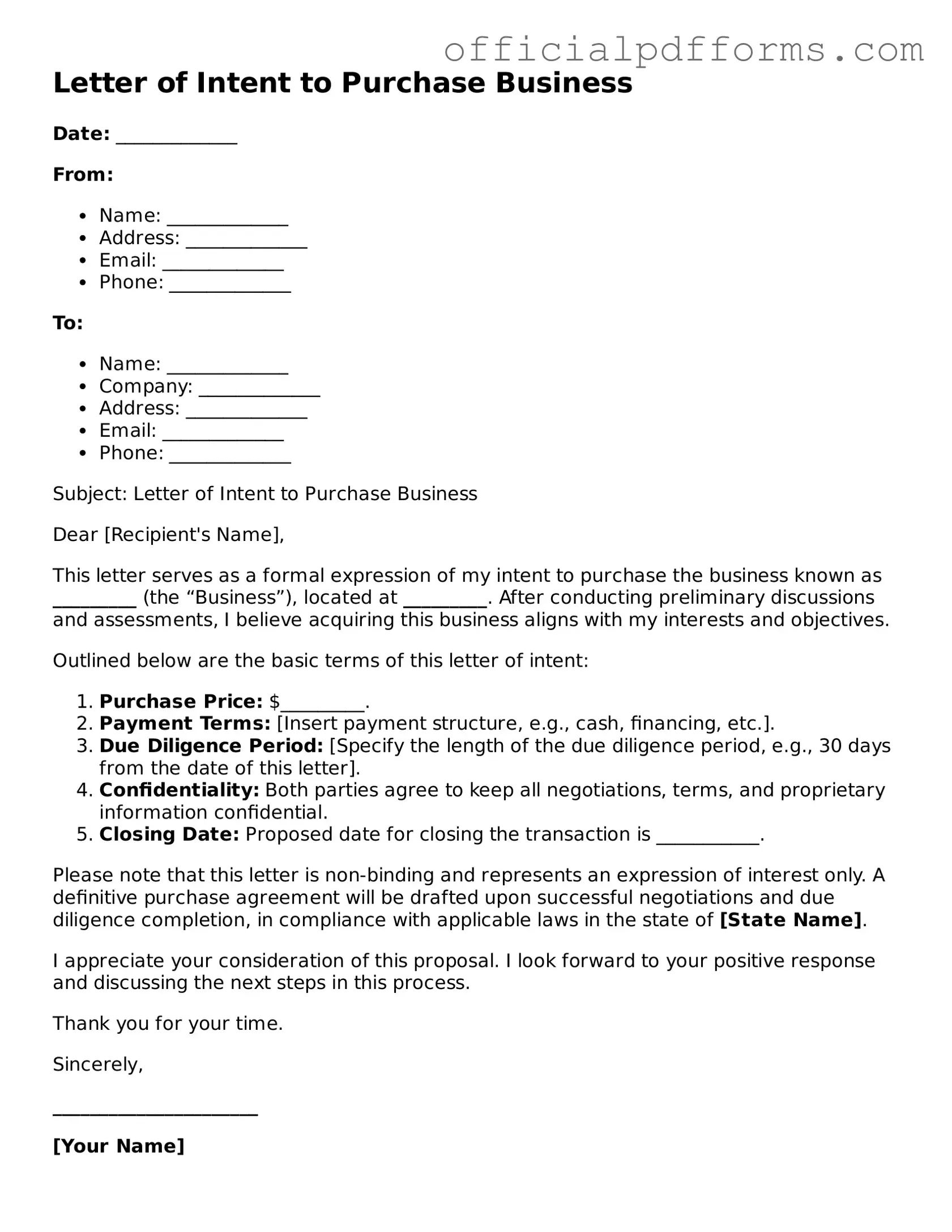What is a Letter of Intent to Purchase Business?
A Letter of Intent (LOI) to Purchase Business is a preliminary document that outlines the intention of one party to buy a business from another. It serves as a starting point for negotiations and establishes the framework for a potential sale. While it is not a legally binding contract, it demonstrates the buyer's serious interest and can include key terms such as the purchase price, payment structure, and any conditions that must be met before the sale can proceed.
What should be included in a Letter of Intent?
When drafting a Letter of Intent, several important elements should be included to ensure clarity and mutual understanding:
-
Identification of Parties:
Clearly state the names and addresses of both the buyer and the seller.
-
Description of the Business:
Provide a brief overview of the business being purchased, including its assets, liabilities, and any relevant operational details.
-
Purchase Price:
Specify the proposed purchase price and the payment terms, such as whether it will be paid in cash, through financing, or a combination of both.
-
Due Diligence Period:
Outline the timeframe for the buyer to conduct due diligence, which allows them to investigate the business’s financials, operations, and legal standing.
-
Confidentiality Agreement:
Include a clause that protects sensitive information shared during the negotiation process.
-
Timeline:
Set forth a timeline for the completion of the transaction, including any key milestones.
Is a Letter of Intent legally binding?
Generally, a Letter of Intent is not legally binding, meaning that it does not create a legal obligation for either party to complete the transaction. However, certain provisions within the LOI, such as confidentiality agreements or exclusivity clauses, may be binding. It is essential for both parties to understand which parts of the document are intended to be enforceable and to consult with legal counsel if there are any uncertainties.
Why is a Letter of Intent important?
A Letter of Intent plays a crucial role in the business acquisition process for several reasons:
-
Clarifies Intentions:
It helps clarify the intentions of both the buyer and seller, reducing misunderstandings.
-
Framework for Negotiations:
The LOI provides a framework for further negotiations, allowing both parties to discuss terms in a structured manner.
-
Facilitates Due Diligence:
By establishing a timeline and expectations, it aids in the due diligence process, ensuring that both parties have adequate time to evaluate the transaction.
-
Builds Trust:
A well-drafted LOI can foster trust between the parties, indicating that both are serious about the potential transaction.
How long does it take to draft a Letter of Intent?
The time required to draft a Letter of Intent can vary based on the complexity of the transaction and the readiness of both parties to agree on terms. Typically, it can take anywhere from a few days to a couple of weeks. Factors that influence this timeframe include the availability of information, the need for negotiation on specific terms, and the involvement of legal advisors. Open communication between both parties can expedite the process significantly.
Can a Letter of Intent be modified after it is signed?
Yes, a Letter of Intent can be modified after it is signed, but any changes should be documented in writing and agreed upon by both parties. It is advisable to clearly outline any amendments or additions to the original document to avoid confusion. Both parties should retain copies of the original and any modified versions for their records. Consulting with legal counsel during this process can help ensure that all modifications are properly executed and understood.
